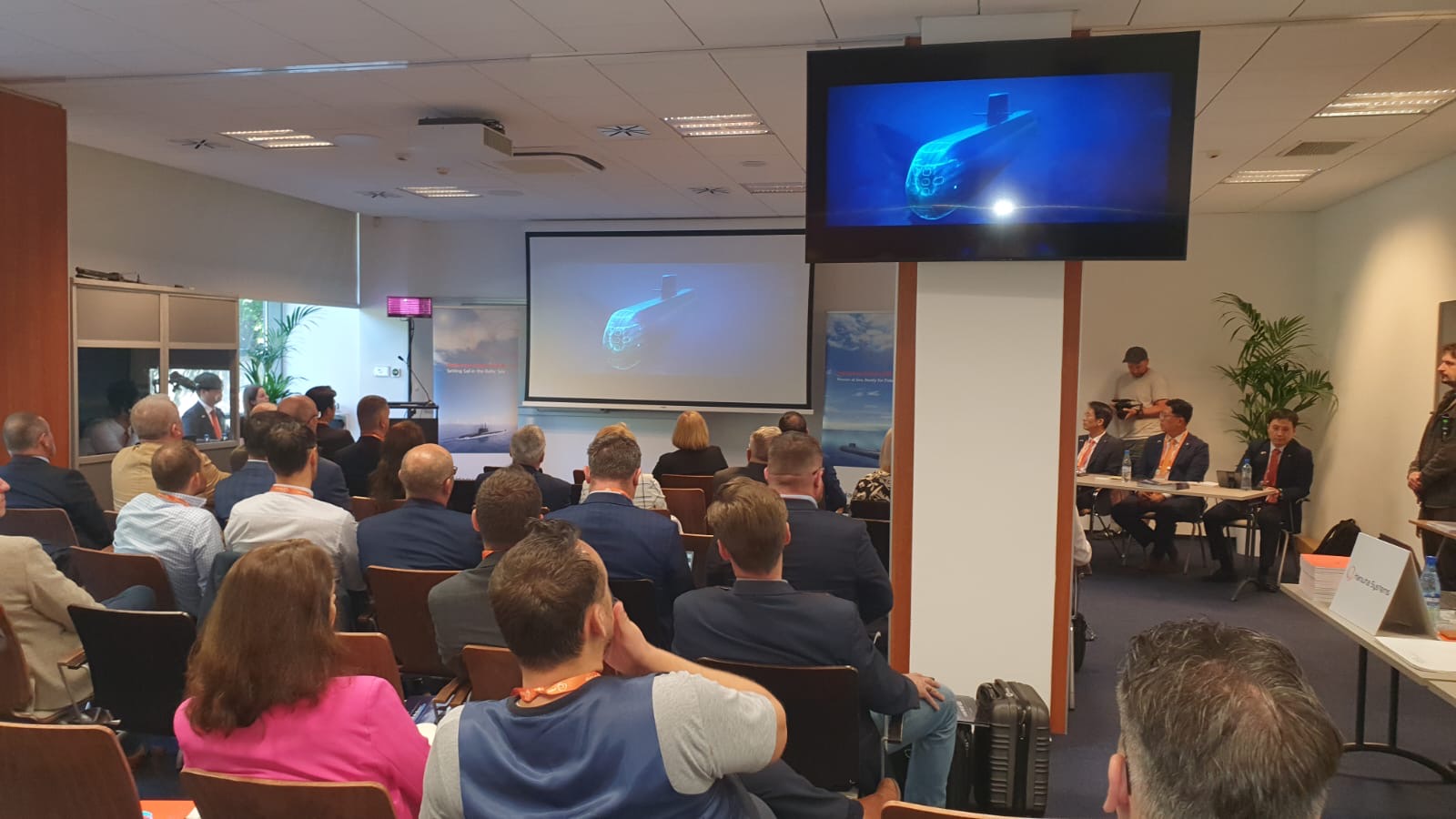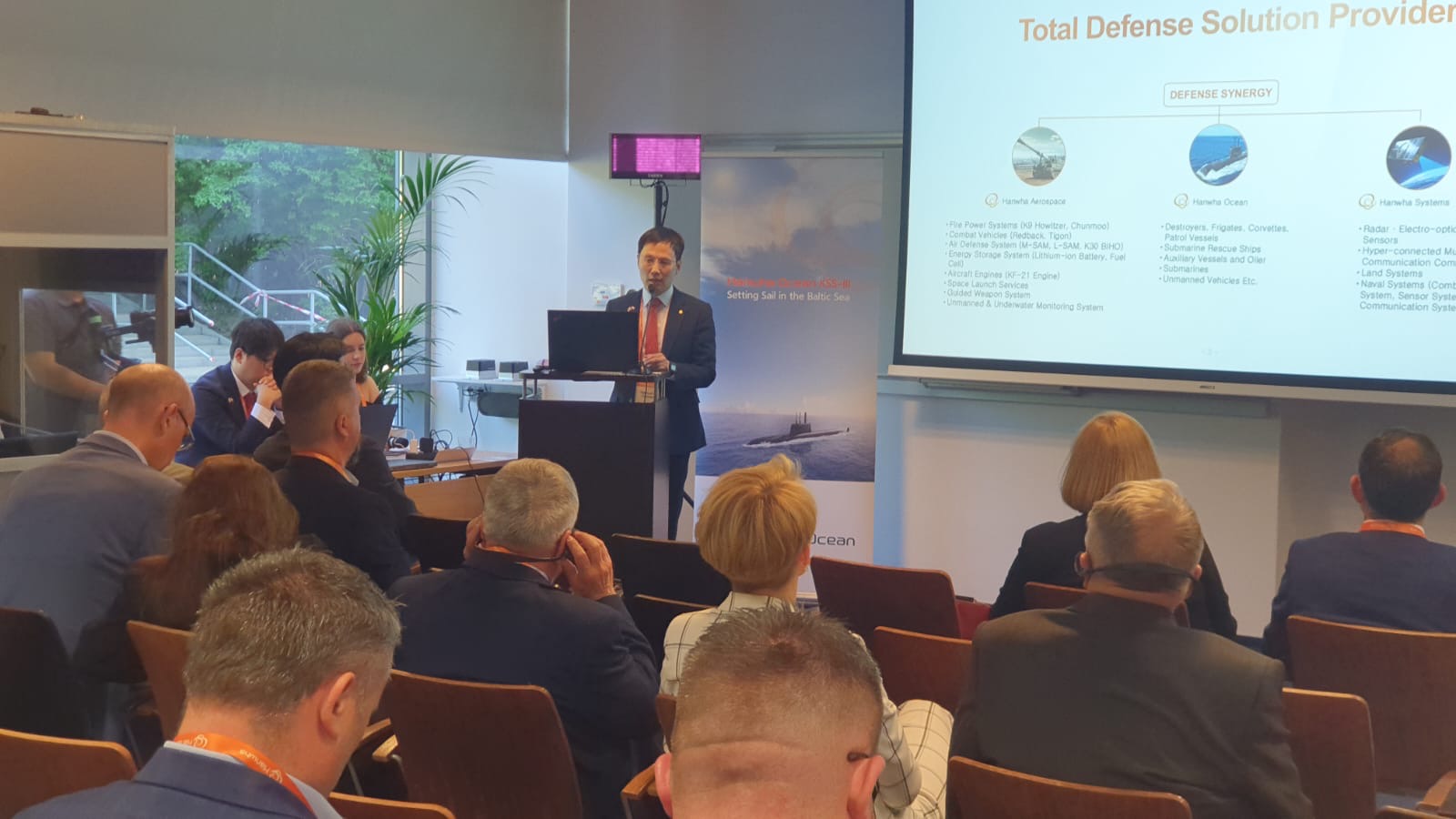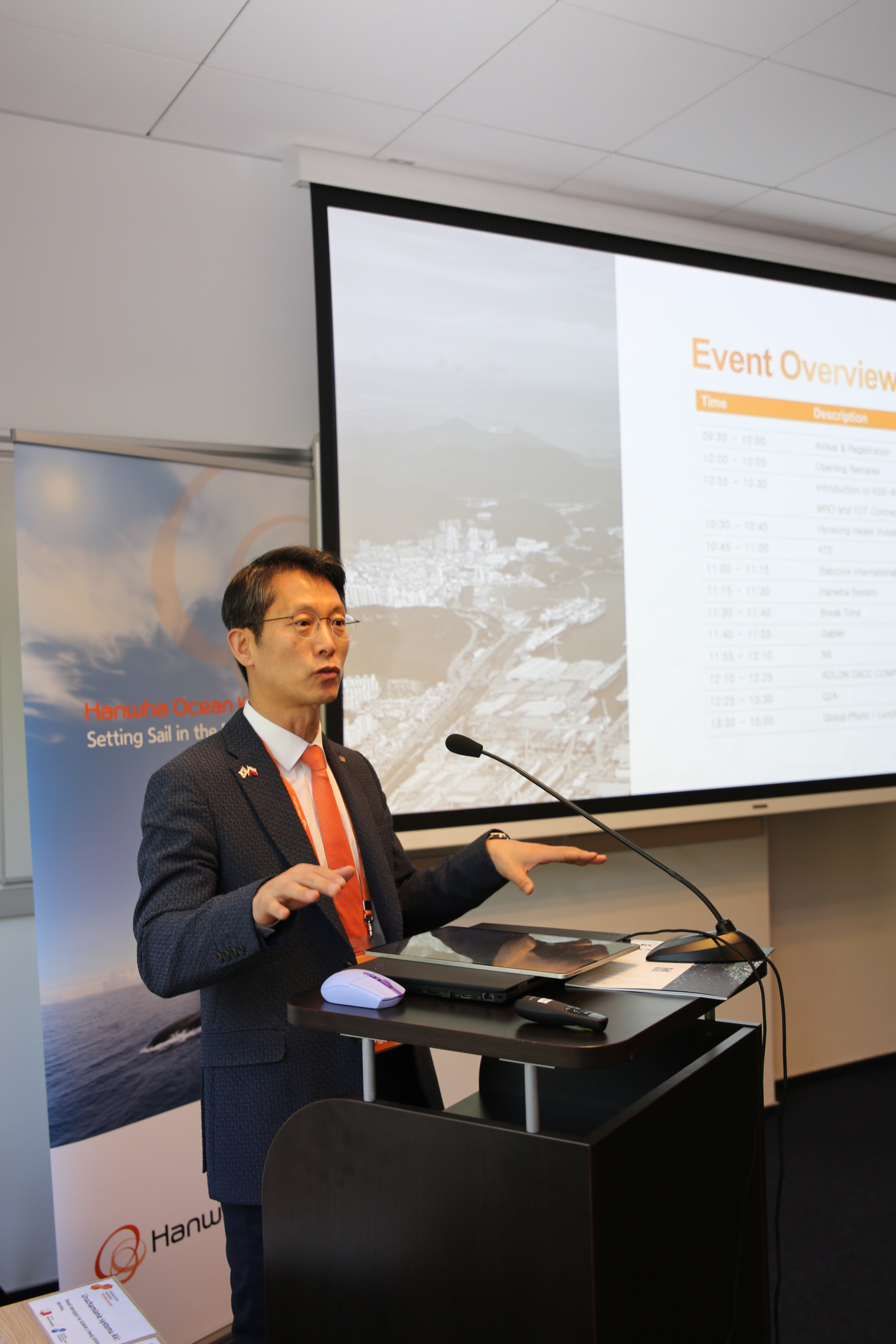The industry event took place at the Gdansk Science and Technology Park, with the attendance of representatives from Hanwha Ocean’s domestic and international partners, such as Hanwha Systems, Hyosung Heavy Industries, KTE, NK, Kolon Dacc Composite, Babcock International Group, and Gabler. These partners are key players for developing the KSS-III submarine for the Korean Navy, as they provide critical system for the KSS-III, including the Combat Management System (CMS), weapon launching systems, masts, hydraulic equipment, propulsion motors, integrated platform management systems, and composite structures for submarine hull.
The event is designed to offer emerging opportunities for collaboration among Hanwha Ocean, its existing partners, and Polish enterprises that can be part of the supply chain for the Orka project, should Hanwha Ocean’s proposal be positively considered by the Polish Ministry of National Defense.
“Today’s event marks the beginning of a long-lasting partnership we aim to establish. Building on this engagement, we plan to enhance our cooperation with our Polish partners through numerous similar events,” said retired Vice Admiral Steve SK Jeong, Vice President of Hanwha Ocean. “This is also a significant step towards strengthening naval collaboration between Poland and Korea, as it highlights the potential for future cooperation, technology transfer, and the development of Poland’s naval defense capabilities.”
During the conference, in particular, Hanwha Ocean presented its MRO (Maintenance, Repair, and Overhaul) capabilities and the Transfer of Technology (TOT) plans for the Orka project.
In line with the Polish Navy’s plans to maintain and repair its future submarines domestically, Hanwha Ocean is willing to offer comprehensive TOT plans to help the Polish industry independently conduct MRO operations in the future. This transfer includes essential maintenance technologies, licenses, and intellectual property for producing submarine onboard equipment and repair parts.
The TOT will enable Polish companies to manufacture their own parts and equipment, with the potential for broader applications that could benefit the private sector, too. Hanwha Ocean also laid out plans to establish an MRO Support Center in Poland, offering crucial onsite support and knowledge sharing throughout the submarines’ lifecycle, ensuring high availability and reliability of Poland’s submarine fleet.
Industrial Cooperation: Benefits for the Domestic Industry
Hanwha Ocean emphasized its commitment to maximizing local industry involvement in the Orka project’s MRO. This collaboration is expected to boost Poland’s defense capabilities, foster workforce development, and drive economic growth. Additionally, Hanwha Ocean is keen on revitalizing the shipbuilding ecosystem in the Gdańsk and Gdynia region.
Hanwha Ocean also offered plans to collaborate with Polish universities including the Naval Academy and research institutions to co-develop naval ships and systems tailored to the Polish context. Hanwha Ocean’s in-house R&D Institute, with over 300 researchers, is well-positioned to contribute to this collaboration, covering topics from fundamental ship design to advanced eco-friendly energy systems and digital solutions for smart ships.
The partnership will foster the creation of tailored, cutting-edge solutions that meet Poland’s unique requirements and contribute to the nation’s technological advancement. This collaboration marks the beginning of ongoing efforts to extend cooperation between Polish and Korean industries.


KSS-III: Proven Solution for Poland
The development of the KSS-III submarines marks a significant step in South Korea’s strategic and technological advancements, driven by critical factors. North Korea’s aggressive military posture, including an expanding submarine fleet of over 70 vessels and ongoing nuclear developments, has heightened South Korea’s security concerns.
Additionally, South Korea’s volatile geopolitical environment, bordered by powerful neighbors such as China and Russia, necessitates a robust maritime defense capability to safeguard national interests and consolidate regional stability. In response, South Korea prioritized building an advanced submarine force to deter and defend against potential maritime uncertainties. Submarines act as a force multiplier and an asymmetric force, allowing a relatively small fleet to exert strategic influence and control over security environment. This makes submarines a cost-effective solution for promoting national security and defense.
Initiated in 2004, the KSS-III program was designed to meet these strategic needs. Modern submarine warfare demands cutting-edge technology in stealth, propulsion, and weaponry, and the KSS-III submarines are equipped with the latest advancements to ensure superiority in underwater combat and enhance South Korea’s defense posture.
A significant milestone was reached in August 2021 with the delivery of the first KSS-III submarine to the Korean Navy, followed by the second in April 2023 and the third in April 2024. These submarines have been crucial in enhancing South Korea’s naval capabilities and have solidified Hanwha Ocean’s reputation as a leader in advanced submarine design and construction.
“Should Hanwha Ocean’s submarine be selected by the Polish Ministry of National Defense, we can deliver the submarine to the Polish Navy within six years from the contract award, based on Korea’s outstanding shipbuilding technology and efficient project management skills,” said Steve. “Hanwha’s ability to deliver products on time and even ahead of time has already been witnessed in the ongoing K9 self-propelled howitzer and Chunmoo (Homar-K) MRLS projects for the Polish Army.


Technological Capabilities and Innovations
The KSS-III proposed by Hanwha Ocean for the Orka project is 89 meters long and has a displacement of 3,600 tons. It is highly automated, allowing operation by a minimum crew of 33 members. The KSS-III is equipped with a diverse range of weaponry, capable of firing anti-ship missiles, anti-land missiles, torpedoes, and mobile mines. It features a noise-minimizing hull design for stealthy underwater operations, a fuel-cell air-independent propulsion (AIP) system, and state-of-the-art lithium-ion batteries, allowing it to stay submerged for over three weeks without snorkeling. The submarine also has deep strike capability, being able to launch both conventional submarine- launched ballistic missiles and cruise missiles, significantly enhancing its deterrent capabilities.
Furthermore, the KSS-III is equipped with advanced integrated combat management and sonar systems, as well as a communication system and allied Link system that ensure interoperability with allied nations. “KSS-III is designed for versatility, and can operate effectively in both littoral shallow waters of the West Sea and deeper oceanic environments of the East Sea around the Korean Peninsula.
